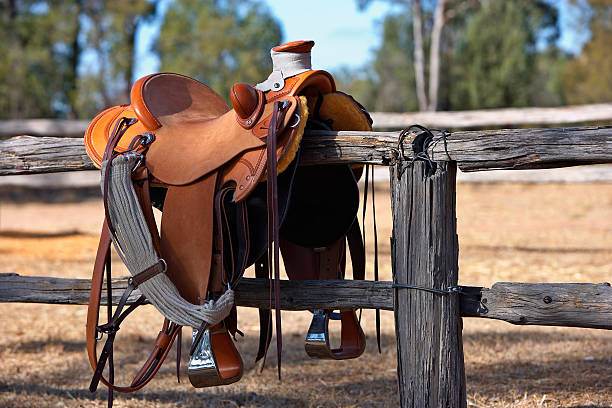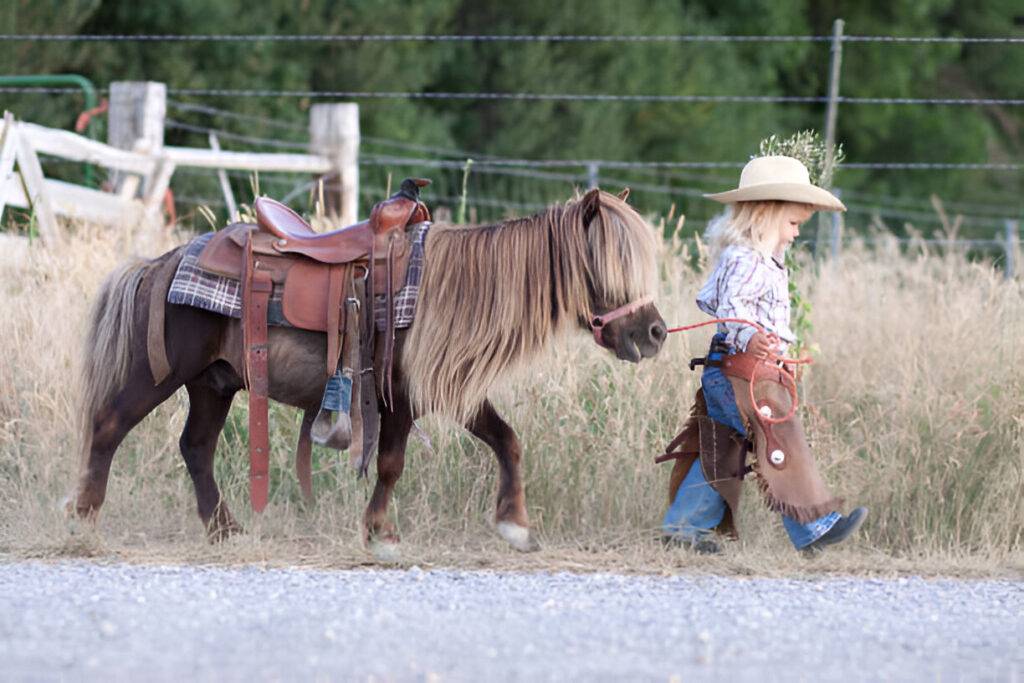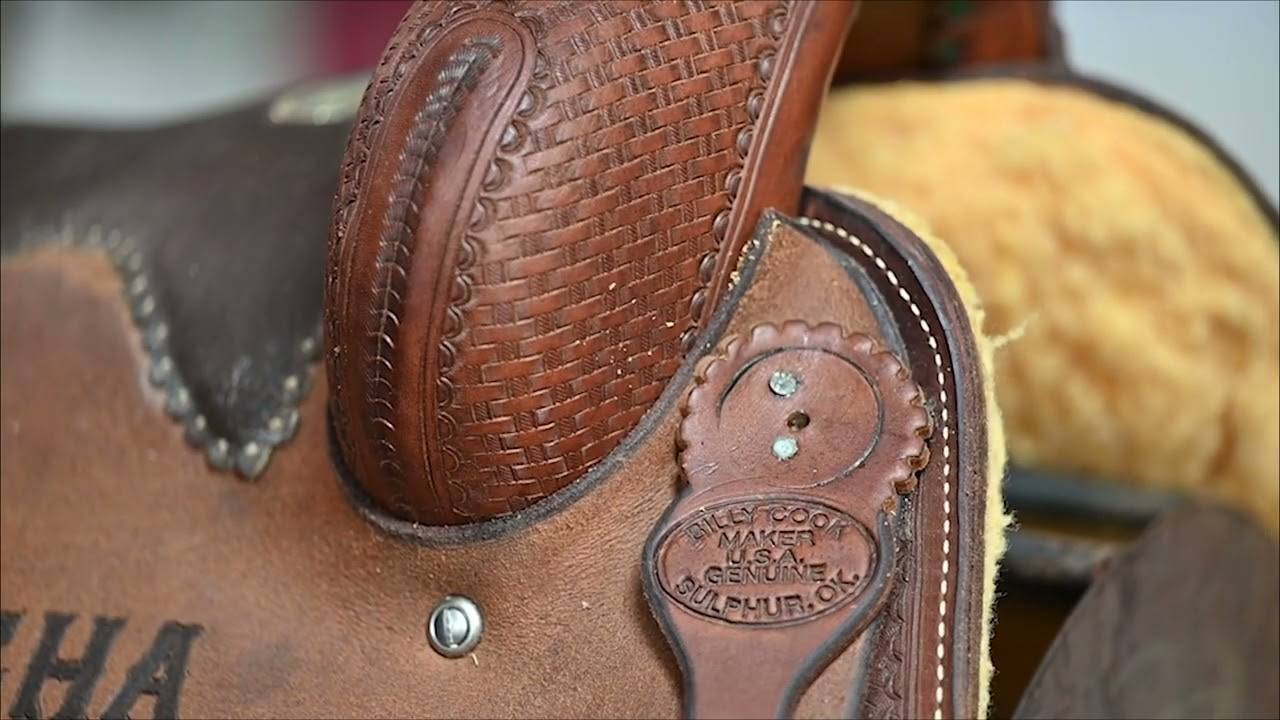
The Art and History of Saddle Conchos: Timeless Western Elegance
Saddle conchos demonstrate the ideal mixture of functionality with art in Western equestrian culture. These decorative metal pieces both indeed serve some practical purposes as well as exhibit the rich cultural heritage and craftsmanship characterizing Western riding. This is what this extensive guide will go into-all about saddle conchos, their history, as well as useful tips on how to choose and install them.
What Are Saddle Conchos?

Conchos are decorative metal discs, used predominantly on Western saddles. Concho derives from the Spanish word for seashell-“concha”-alluding to the common roundish/ovalish shape of these ornaments. Decoration may be made from metals like silver, brass, copper, or German silver (nickel silver), and come in a variety of sizes, styles, and designs.
Primarily decorative, conchos also serve a functional purpose on saddles. They were often fitted with leather rosettes and used to secure the saddle strings that attach the saddle’s skirts to the saddle tree. The decorative concho sits on the top while the leather rosette is applied behind it. Thus, it serves both functional and esthetic ends.
The Rich History of Conchos

The history of conchos reaches back centuries and represents a fascinating cultural intersection. Their origins can be traced to several influences:
Native American Heritage
The first concho belts were made by Navajo silversmiths in the late 1860s. The first concho belt is often attributed to the Navajo man Arsidi Chon (also known as “Ugly Smith”). Such pieces were remodeled from melted-down pesos and had basic designs with scalloping along edges and diamond-shaped cutouts through which strips of leather could be threaded.
Much of the inspiration for the Navajo came from:
- Spanish colonial buckles and decorative elements
- Trade examples of German-silver hair plates to Plains peoples
- Indigenous traditional designs and patterns
From Belts to Saddles
Traditional silversmithing gradually gained popularity for the embellishment of belts and horse trappings. Announced with the Spanish colonial influence in the American Southwest were ornate designs of saddle decorations, of which the concho was a very important part. By the late 1800s, conchos began appearing regularly on premier Western saddles, signifying excellence and prestige.
Types of Saddle Conchos
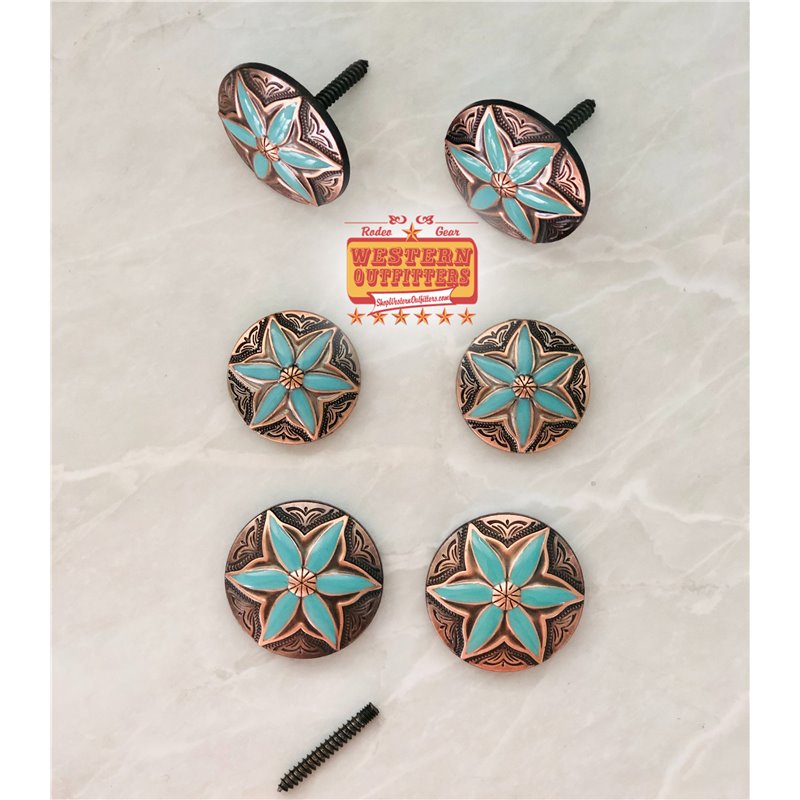
Modern saddle conchos come in a dazzling array of styles, materials, and attachment methods. Understanding the different types can help you select the perfect conchos for your saddle:
By Material
- Silver Conchos: Both traditional and elegant, it signifies the fullest measure of Western extravagance, where one can select from sterling silver (92.5% pure) or German silver-an alloy containing nickel but no silver-whatis really.
- Copper Conchos: Adding warmth and rusticity that will slowly develop into a beautiful patina, these copper conchos have been gaining immense popularity these days.
- Brass Conchos: Brass conchos are the up and coming affordable alternative to silver which still has the beauty to offer, a golden hue to match saddle leathers.
- Mixed Metals: Many top-end conchos employ amalgam metals to create contrast, intrigue, and visual interest, silver on top of a base of copper-an example of this would be.
By Design Style
- Floral Engraved Conchos: These exquisite conchos bear beautiful floral designs which frequently have deep western meanings: roses, thistles, or, in some cases, sunflowers. They are classic choices in the world of traditional western saddles.
- Geometric Conchos: With their clean lines of stars, circles, and other geometric forms, these conchos present a modern look.
- Stone-Inlay Conchos: Very often conchos of a higher-priced variety will inlay turquoise, coral, or other semiprecious stones to supply a pinch of color and interest.
- Themed Conchos: From horseshoes to crosses, from stars to animals, themed conchos allow riders to show their personality and interest.
By Attachment Method
- Screw-Back Conchos: By far the most common found on saddles, they contain threaded posts that screw directly into the saddle or into special adapters.
- Slotted Conchos: As the name implies, these have two slots running parallel to each other that allow leather strings through to attach the saddle skirts to the tree.
- Chicago Screw Conchos: This two-piece fastener consists of a male and female part that is threaded to join together, allowing for the attachment to thinner leather pieces.
- Rivet-Back Conchos: These are permanently attached with special rivets and are usually used on cheaper tack.
How to Select the Perfect Saddle Conchos
When choosing conchos for your saddle, bear in mind the following factors:
- Complementary Style: Choose matching conchos in conjunction with the style of your saddle. For example, a classic silver floral concho would fit well with the traditional smoothness of a western show saddle among more basic designs with a working ranch saddle.
- Appropriate Size: Typical size of saddle conchos varies between 1″-1.5″ in diameter. The larger conchos (1.5″) are used at the strategic points such as on the fork, with smaller conchos (1″) being used to adorn skirts or back.
- Material and Finish: Consider your climate and maintenance preferences. For instance, silver needs polishing to avoid tarnishing, while copper attains its natural patination, which is often favored by some riders.
- Quality of Craftsmanship: Smooth edges and crisp, clear engraving are trademarks of quality conchos.
- Compatibility: Check that the manner of attachment is appropriate to your saddle. Most replacement conchos use screwbacks, and you will need to measure thread size and length.
Installing and Replacing Saddle Conchos

Whether you’re customizing a new saddle or refreshing an older one, knowing how to properly install conchos is an essential skill:
Tools You’ll Need
- Screwdriver (flathead or as per the size of your conchos)
- Concho adapters (if needed)
- Leather rosettes (for slotted conchos)
- Thread-locking compound (optional, for permanent installations)
- Saddle soap and silver polish (for cleaning).
Step-by-Step Installation Process
- Removing Old Conchos: If you are replacing original conchos, carefully remove them using the correct screwdriver. Work slowly to avoid damaging the leather or stripping the threads in the saddle tree.
- Clean Area: After removing the old conchos, clean the area using saddle soap and let it dry completely.
- Prepare New Conchos: If your new conchos come with different thread sizes, you will have to get adapters that screw into the existing holes in your saddle tree.
- Install Leather Rosettes: For slotted conchos, position the leather rosettes first, making sure that the slots line up with the saddle strings properly.
- Attach New Conchos: With new conchos, screw them in carefully. To really make it permanent, add a tiny drop of thread-locking compound prevent loosening.
- Check Security: After insertion, test each one lightly to see that it is securely attached. Loose conchos can easily be lost during riding.
Maintenance and Care
Proper maintenance keeps your saddle conchos looking beautiful for petsons:
- Regular Cleaning: Quality silver polish cleans silver conchos. Appropriate metal cleaners clean copper or brass conchos or allow them to develop natural patina.
- Prevention of Tarnish: Applying a very thin coat of renaissance wax or some other protective product to slow tarnishing may help, particularly in more humid environments.
- Security Check: Occassionally checking that all of your conchos are tight since riding vibration can gradually loosen them over time.
- Storage Considerations: When you store your saddle, a saddle cover for all conchos would be a good idea to keep them away from dust and moisture.
The Cultural Significance of Conchos
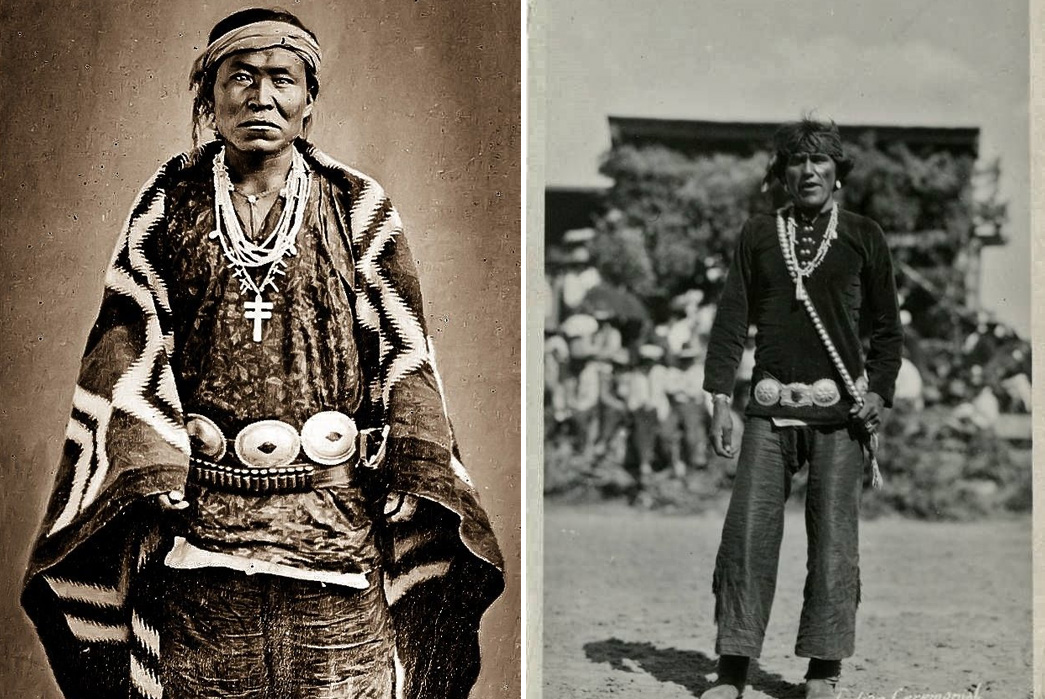
Apart from decorating their primary function, conchos are rich in cultural meaning:
- Workmanship Symbol: Conchos, being handmade, are representative of the great esteem for craftsmanship in the Western and Native American cultures.
- Status Indication: Traditionally adorned with elaborate silverwork, conchos have been used to indicate wealth and social standing among Native peoples and European settlers alike.
- Preserving Culture: The traditional way of making conchos preserves valuable Native American silver-smithing traditions that would otherwise die.
- Artistic Expression: For many contemporary artists, conchos provide a surface upon which to express cultural identity and perpetuate traditional forms of art.
Contemporary Trends in Saddle Conchos
Modern saddle makers and riders are in constant experimentation while working from tradition:
- Mixed Materials: Conchos by contemporary designers often mix traditional silver with contemporary inlay materials like colored resins or exotic hardwoods.
- Customized Designs: Increasingly popular are custom engraved conchos displaying ranch brands, initials, or symbols as a further personal touch.
- Retro Style: Many riders are on the hunt for genuine vintage conchos to restore their period-accurate saddles in order to enjoy the patina created only over decades of use.
- Sustainable Materials: Artisans are developing conchos from recycled metals or ethically sourced materials, thereby appealing to eco-conscious riders.
Conclusion
Conchos saddle are much beyond embellishment. They refer to legacy with centuries of cultural fusion, craftsmanship, and equestrian tradition. Whether you are a competitive rider hunting show-stopping tack, a working cowboy who mainly values function and durability, or a collector who appreciates his Western heritage, an understanding of the art and history of saddle conchos only heightens your appreciation of these beautiful objects.
In choosing good conchos that will work with your saddle and taking care of them, you are actively taking part in a living tradition whose relevance changes while preserving a rich past. In every silver, copper, or brass disk adorning a Western saddle, we see reflections of Spanish colonists, Native American artists, frontier cowboys, and contemporary craftspeople-all connected through these small-but-important pieces of Western art.

